Of the top men’s magazines to come out of Asia, GQ Style China and GQ China has consistently stood out from the rest with its art direction and super cool choices in photographers, stylists and models. One of the main reasons has been the fashion director for both magazines, Dan Cui. MDC’s Felix Chang chats to Dan about his origins, his insights on the Chinese market and gives us some behind the scenes shots from the new issue out right now. (For our Chinese audience, Dan’s interview is below the images. 中文读者们,Dan Cui专访内容的中文版本於图片之下。)
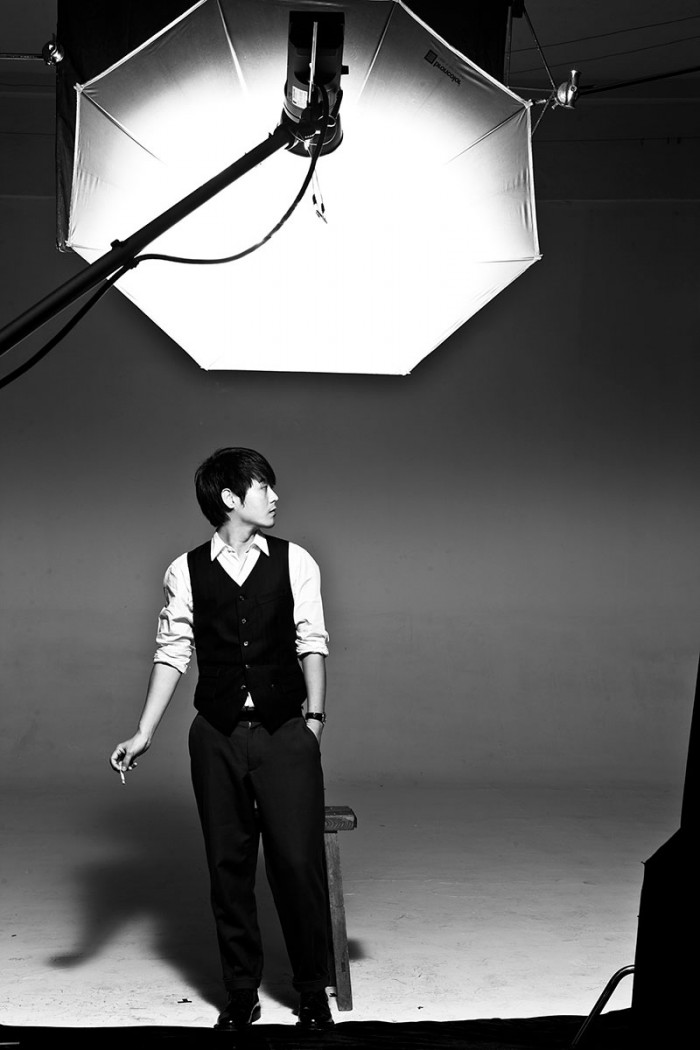
Portraits courtesy of Dan Cui for models.com.
Where are you from?
I majored in Theater Costume Design in Shanghai Theater Academy. After that, I went to ESMOD in Paris to pursue advanced studies in ready-to-wear design. I decided to come back to China in 2005. I have been in the fashion industry for over eight years now.
How did you get into fashion?
When I first came back to China, the fashion design industry of China was still undeveloped, and there were barely any platforms built for independent designers to show their work. Therefore, I chose not to become a designer but took a chance, referred by a friend, to interview for a fashion editor position for Marie Claire China. I always had a fancy for the fashion media industry, and I always liked and thought about magazines since I was little. On top of that, I was curious about how to make fashion visuals, and I liked articles and critiques of the fashion industry. Because of my passion for fashion, I nailed the interview and got my first job in this industry. After three years of hard work and a little bit of luck, I was promoted to be the fashion director. At the same time, GQ was launching its first issue in China. I decided to take a chance and entered the media sector of men’s wear.
Who are your favorite designers?
I started out being obsessed with Comme des Garçons, Viktor & Rolf, John Galliano, Jean Paul Gaultier, Alexander McQueen and Martin Margiela. I have since then come to equally appreciate Dries Van Noten, Nicolas Ghesquiere, Miuccia Prada, Alber Elbaz, Raf Simons, Phoebe Philo and Thom Browne. I have many favorites. Often times I have to look at designs for the magazine with an unbiased eye. I think it depends on each particular season. I recently fell in love with another designer, Alexandre Mattiussi, and we feature him in this issue’s designer interview.
In every issue of GQ Style China, there are a few new Chinese faces that the magazine features heavily. How do you select those new faces? What criteria are you looking for in those models?
I think this is an exciting thing to do, but it’s a bit difficult at the same time. I always had an expectation for the Chinese youth to bring different faces and spirits to the game. However, most Chinese young people are still taught to be the “same” as everyone else. This comes from the pressure at home and in the society. This makes it hard to find new faces with unique characteristics and personalities. Plus the fact that the modeling industry in China is quite monotone, and most of the agencies are not willing, or have no authority to make the current condition of Chinese models more organized. I also think there are not enough good judges of talents. Even if they have found great models, they don’t know how to make the good models “stars”. And these talents will transfer to a foreign agency, which makes the Chinese agencies keep doing “passive” management. Therefore, when I find a new face, I am always excited to help them find recognition. I think I have a good talent in selecting models and through different means of styling, backed up by various kinds of shoots to create different feelings about particular models. And that model at that time should only belong to GQ. I select these better models mainly by castings. For selecting models for GQ Style, I tend to choose new faces that haven’t been over exposed. I start with one particular style to match his unique personality. There are quite a lot interesting stories behind the method of styling and selecting the right models. The last few castings have given me some hope in the Chinese modeling industry as I saw more boys born after the 90s had different characteristics and spirits.
Chinese fashion and fashion magazines are moving forward faster than ever. As the fashion director of GQ Style China, what is the magazine’s perspective and what kind of role does the magazine play in men’s fashion in China?
GQ Style China obviously mainly translates Chinese trends, but it also grasps international perspectives and has always acted as a leader in the industry in China. The magazine constantly attempts to find new ideas and talents from within, since China has so many rich resources. GQ Style China has kept close ties to its Chinese roots while fulfilling its responsibilities as an international fashion media brand.
Give us some behind the scenes tidbits about the current issue of GQ Style?
For this issue, we used a cover introducing rising young face, Jeremy Wu. For this issue, we worked with Armani as one of the key brands of this issue. Jeremy was the very lucky new face chosen by Mr. Armani himself, and is on the printed cover of this issue. Another great new face is Jin Dachuan who made his debut in Europe in the Prada show last June. Since then, he walked for Prada again as well as Louis Vuitton, Kenzo, Jil Sander, Bottega Veneta, and Roberto Cavalli. This has made him one of the most brilliant Asian faces to recently emerge onto the market.
Our cover shoot took place in Melbourne, a nice sunny city in the south globe. We combined fashion with a sporty theme to translate different characteristics and spirits of urban young people.
Another highlight of this issue includes our fashion feature shoots named The Sexy Ones. We featured Liao Fan, the new best actor of the Berlin Film Festival, Zhu Zhu and Zhou Dongyu, two famous actresses in China and glamourous faces of different industries in China to combine the Chinese way of “sex appeal” with fashion.
We also invited Anders Solvsten Thomsen, the Fashion Director of Love and new vigorous photographer Felix Cooper to present us an edgy grooming story, Men in Canvas. They used a sophisticated method that illustrates how the attitudes of young artists are timeless.
In addition, photographer Marcelo Krasilcic (Serlin Associates) and stylist Haidee Findlay-Levin, who have been working with us for a long time, created a fun fashion well story that focuses on the color of clothes.
Chinese Photographer Fan Xin has contributed an editorial with a powerful and unconstrained style of pictures that transmit the unruly spirit of young people in the surroundings of different luster and textures.
We also worked with Photographer Li Zi to achieve a fashion story named Spoiled. This story created a contrast between the coquetry of flashing materials and the quietness of masculinity.
Photographer Trunk Xu locked his camera lens on the new rising British band Coastal Cities and recorded one day of their lives. Members in the band, Sean Semmens and Declan Cullen, walked recently for Hedi Slimane in Saint Laurent.

All behind the scenes images of GQ Style China S/S 14 below, courtesy of Dan Cui.
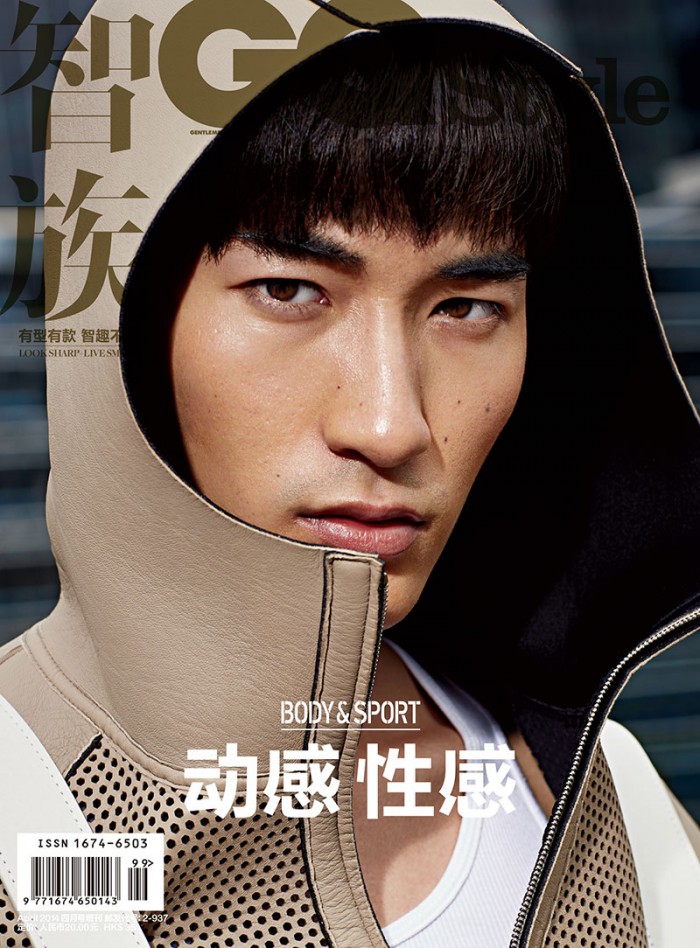
Jeremy Wu by Yuan Gui Mei, cover shoot
Yuan Gui Mei shoot: Behind the scenes


Yuan Gui Mei shoot: From the issue


Trunk Xu shoot: Behind the scenes
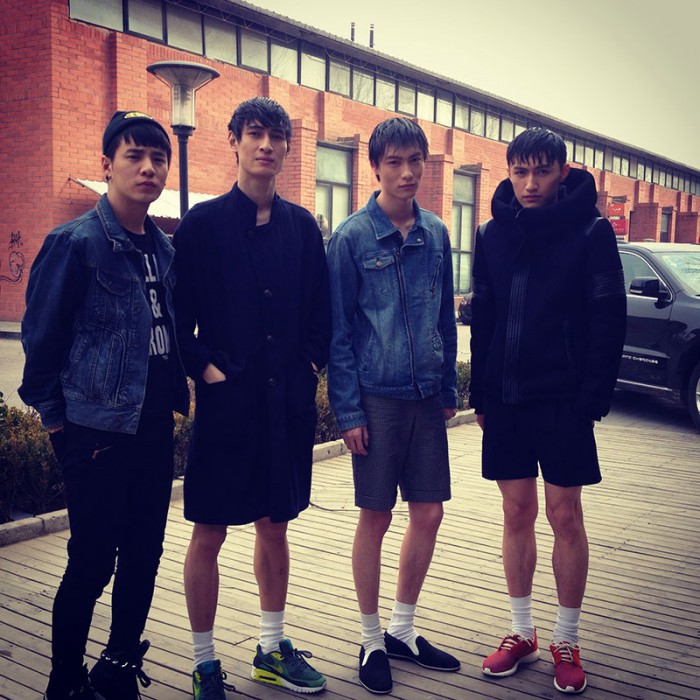
Trunk Xu shoot: From the issue

Blair Getz Mezibov shoot: Behind the scenes
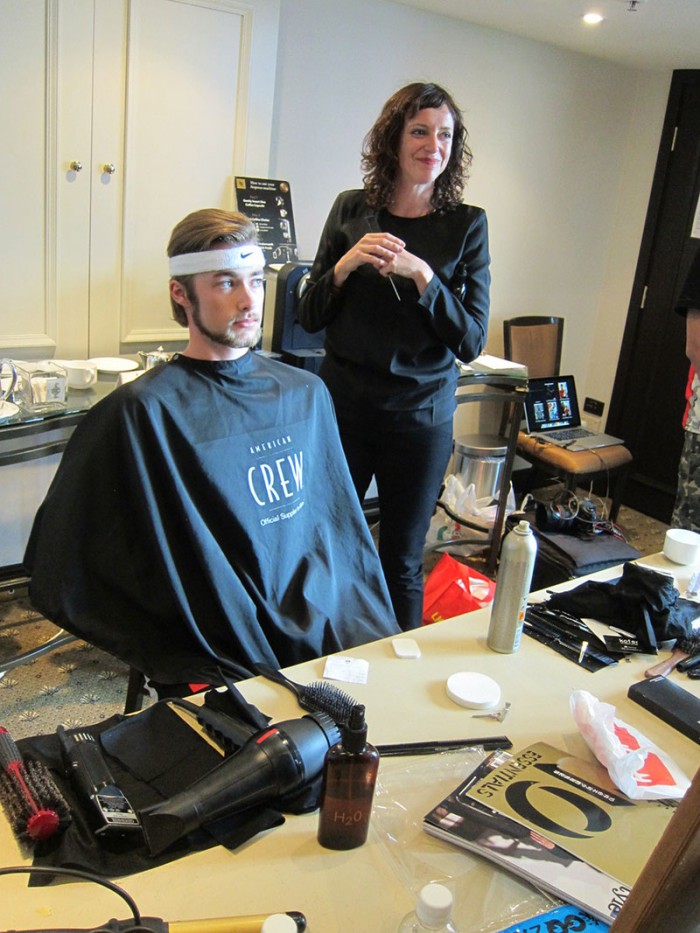
Blair Getz Mezibov shoot: From the issue
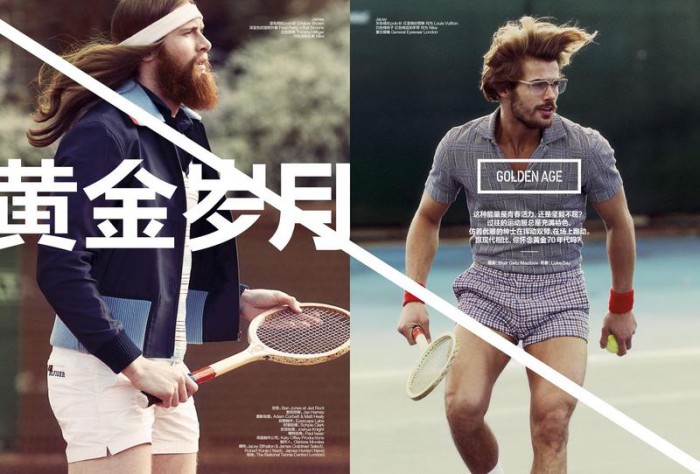
Li Qi shoot: Behind the scenes with the Luu Brothers

Li Qi shoot: From the issue with Hao Yun Xiang on left

1. 告诉我们关於你的背景。
我在中国主修上海戏剧学院的舞台服装设计专业,后来又去法国巴黎的ESMOD时装学院深造成衣设计,2005年决定回国发展,在时装圈至今也有近八年的时光。
2. 你是如何进入时尚圈?
我回国开始从业的时候,中国的时装设计行业且处于发展非常初期,并没有成熟的形态露出,也甚少独立设计师的发展平台及空间,所以我并没有选择涉入设计行业。恰巧的一个机会,朋友介绍去《Marie Claire》面试时装编辑,本着对时装媒 体行业的憧憬,自幼又喜欢琢磨杂志细微末节,好奇时装视觉的形成来由,以及喜欢文字和评论性等等多样的期许,我顺利成章地面试成功。经由努力和好的机会,入职第三年被提拔为时装总监,这时GQ China计划创刊,经过长时间的考虑,我决定再做挑战,进入了男装媒体的领域。
3. 你最喜爱的设计师有哪些?
曾经着迷于Comme des Garcons 和Viktor & Rolf、John Galliano、Jean Paul Gaultier、Alexander McQueen、Martin Margiela等等,后又一样欣赏Dries Van Noten、Nicolas Ghesquiere、Miuccia Prada、Alber Elbaz、Raf Simons、Phoebe Philo、Thom Browne等。可能也是从事本行业的缘故,心头好比较多,不再存在单一偶像,时时会拿辩证与冷静的眼光去看待,更多只能以某设计师当季状态为判断吧。最近又有新喜好Alexandre Mattiussi,所以本期GQ Style还找到他做了采访。
4.在每一期的GQ Style China里,总是有少数中国新面孔男模被重用在杂志内页大片及封面,你是如何选择这些男模?在你眼中他们需要具备什麽样的条件?
其实是一件令人兴奋但同时苦恼的事情,我一直在期待中国新一代的年轻人会带来不同的面貌与气息,我们当前年轻人大部分都还是从一个诉求大同的时代走来,家庭教育,社会环境等等条件使得个性符号非常缺失,或者是个性表达不充分,再加上行业环境层次比较单调,大部分经纪公司并没有非常自主性,或者是说没有权威度来梳理中国的模特状况,或者是说缺少伯乐,即便偶尔挖掘到宝物,却不知道如何收藏维护,使之发光,只能拱手送给国外的经纪公司,自己推却到被动性经纪。所以当我发现一个新的面孔,注定是非常兴奋地想要找到认同,当然我也对自己在模特上选择的口味有“莫名天生”的自信。通过造型手段,通过一整本杂志的不同风格的拍摄手段和造型手段,以及各种强调的方法,让大家知道这个人,当然这个人在那一时段只属于GQ,选择他们大部分还是经纪公司前来面试,从一堆 人里面挑出相对好的。对于GQ Style的选择,我一般是选择没有过什么曝光的新面孔,然后从一个特定造型入手是非常对的,或者是说他的个性非常鲜明,但是塑造手法以及如何背后选择有很多有趣的故事,多是各种机缘巧合。当然,从最近的很多casting来看,我倒是看到了更多希望,当下的90后年轻人倒 是越来越多的个性表达,不同面目出来。
5. 中国时尚和杂志正以飞快的速度在进步。身为GQ Style China的时装总监,可否與我们分享这本杂志的视角理念和其在中国男装界所扮演的角色?
GQ Style China大部分采用本土力量,但同时把握国际视角,一直在中国担任着行业引领者的角色,用丰厚的资源和强有力的表达方式不断在挖掘中国的新生力 量,不仅仅是模特,还有艺术家、演员,以及所有具有鲜明个性的社会角色,一 直坚守着最出色的本土化道路,也履行着作为一个时装媒体的责任。
6. 关於這一期的GQ Style China有哪些是读者们可以特别期待的?
首先,GQ Style与Emporio Armani的合作当属亮点,由Mr Armani钦点一位面孔成为GQ Style的封面模特,这也是让我们非常兴奋的一次合作。Jeremy Wu成为这个幸运儿。另一位值得注目的是从Prada的秀场走出来的金大川,从去年春夏Prada秀场的第一次亮相开始,包括Prada、Louis Vuitton、Kenzo、Jil Sander、Bottega Veneta、Roberto Cavalli等等一线品牌的亮相,使金大川成为当前男装领域最瞩目的亚洲新面孔。封面拍摄是于南半球的墨尔本为场地,以运动化的时装姿态诠释了众多带有阳光气息的不同年轻人面貌。亮点还包括以中国式性感为命题的专题拍摄,集结了包括新科柏林影帝廖凡、当红性感明星朱珠、演员周冬雨等等各个领域的中国出色面孔,以中国式的性感手段来表达当季时装的新意。本期还邀来Love的时装总监Anders Sølvsten Thomsen与新锐摄影师Felix Cooper亲自操刀创作的一组《画中人》,以极致的手法演绎了跨越年代、跨越性别的艺术少年。另外长期与GQ Style合作的摄影师Marcelo Krasilcic和造型师Haidee-Findlay Levin打造了色彩衣装的趣味大片。中国摄影师范欣贡献了天马行空的新青年画面,在当今纸醉金迷的各式质感光泽中表达了年轻人不羁的面目。摄影师栗子也在巴黎操作了一组《骄傲》的时装大片,将媚态的闪光材质与静谧的男性化气质对比成趣。摄影师Trunk Xu的镜头锁定了伦敦的新晋当红乐队Coastal Cities,记录了他们的一日,其中的Sean Semmens和Declan Cullen曾为Hedi Slimane的SaintLaurent走秀。







